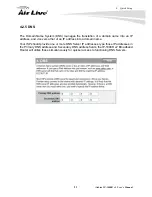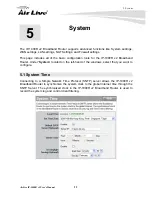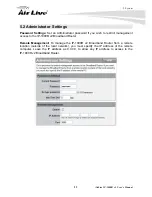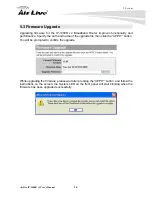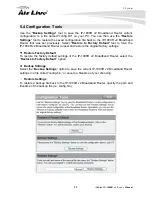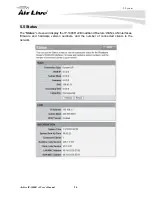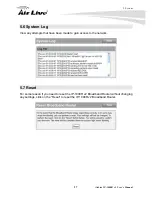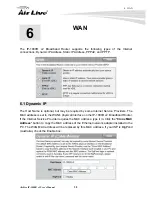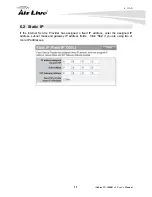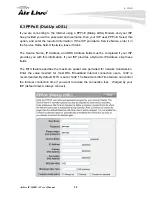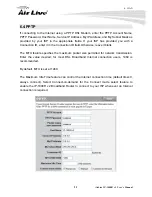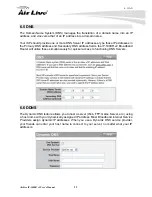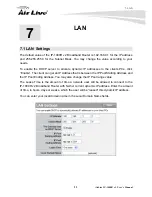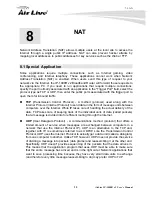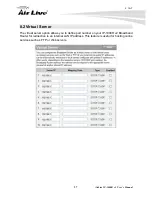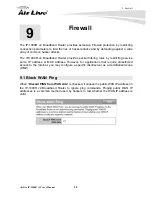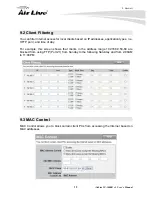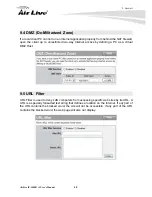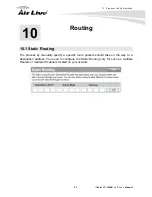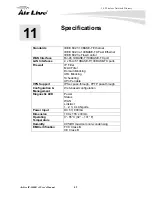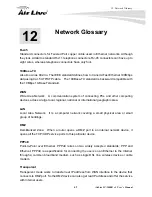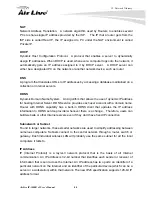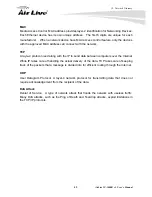
7. LAN
35
AirLive IP-1000R v2 User’s Manual
8
8.
NAT
Network Address Translation (NAT) allows multiple users at the local site to access the
Internet through a single public IP address. NAT can also prevent hacker attacks by
mapping local addresses to public addresses for key services such as the Web or FTP.
8.1 Special Application
Some applications require multiple connections, such as Internet gaming, video
conferencing, and Internet telephony. These applications cannot work when Network
Address Translation (NAT) is enabled. When users send this type of request to your
network via the Internet, the IP-1000R v2 Broadband Router will forward those requests to
the appropriate PC. If you need to run applications that require multiple connections,
specify the port normally associated with an application in the "Trigger Port" field, select the
protocol type as TCP or UDP, then enter the public ports associated with the trigger port to
open them for inbound traffic.
TCP (
Transmission Control Protocol) - A method (protocol) used along with the
Internet Protocol (Internet Protocol) to send data in the form of message units between
computers over the Internet. While IP takes care of handling the actual delivery of the
data, TCP takes care of keeping track of the individual units of data (called packets)
that a message is divided into for efficient routing through the Internet.
UDP (
User Datagram Protocol) - A communications method (protocol) that offers a
limited amount of service when messages are exchanged between computers in a
network that use the Internet Protocol IP). UDP is an alternative to the TCP and,
together with IP, is sometimes referred to as UDP/IP. Like the Transmission Control
Protocol, UDP uses the Internet Protocol to actually get a data unit (called a datagram)
from one computer to another. Unlike TCP, however, UDP does not provide the service
of dividing a message into packets (data grams) and reassembling it at the other end.
Specifically, UDP doesn't provide sequencing of the packets that the data arrives in.
This means that the application program that uses UDP must be able to make sure
that the entire message has arrived and is in the right order. Network applications that
want to save processing time because they have very small data units to exchange
(and therefore very little message reassembling to do) may prefer UDP to TCP

